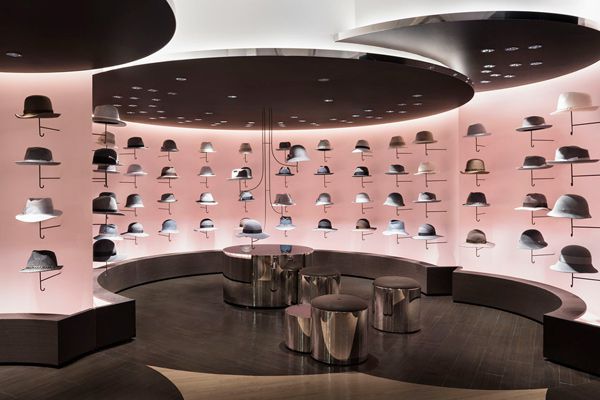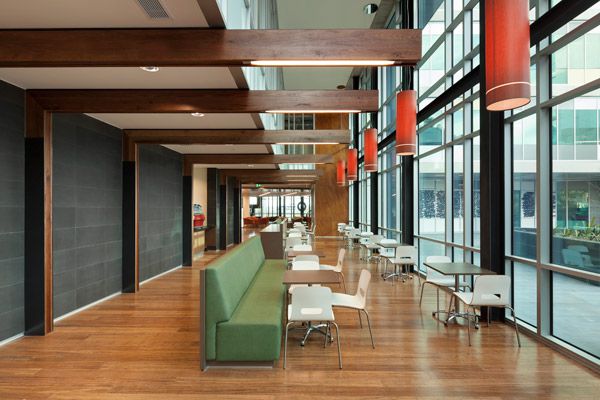Nendo has redesigned a women’s hat store in Tokyo’s Shibuya district, creating a hat cloud.

March 18th, 2016
Located on the second floor of the Seibu Shibuya department store in Tokyo, the hat cloud design is created through the placing of cylindrical structures irregularly throughout the space.
The store is located in a somewhat secluded area, and the hat cloud design makes the constraints of the uneven surfaces of the less noticeable. In fact, this allows for variation of the space within the immediate surroundings, turning the store into a welcoming, three-dimensional space.
The ceiling heights are varied according to each cylinder in the store, so as not to draw attention to the internal beams. Contrasting the overall store bearing the image of huge clouds, the individual hats have been displayed like small umbrellas. Previously, the store’s goods were displayed on shelves, however this umbrella style design is a more eye catching and fun design, to entice shoppers in.
The middle section of the space has been turned into a common seating area, with mirrored stools and tables, and pipes hanging from the ceiling. Hats randomly hooked on this pipes create a floating umbrella of hats.
Nendo
www.nendo.jp/en
A searchable and comprehensive guide for specifying leading products and their suppliers
Keep up to date with the latest and greatest from our industry BFF's!

Vert, an innovative demountable pergola designed for urban greening, is reshaping the way we think about sustainability in urban architecture.

Elevate any space with statement lighting to illuminate and inspire.

A new home for the Queensland Ballet is not only aesthetically beautiful but filled with every amenity to help support and encourage the dancers and the dance.

The Olivia Newton-John Cancer and Wellness Centre (ONJCWC) is a marvellous example of cognitive architecture for enhancing wellness, as Dr. Nicola Davies discovers.
The internet never sleeps! Here's the stuff you might have missed

Aarhus, Denmark is the backdrop for a thought-provoking new book that challenges the architectural discipline to confront issues of diversity, discrimination and inclusion.

Matching style with a capacity to maximise workplace performance, these office chairs lead the field in terms of carbon abatement and sustainability.